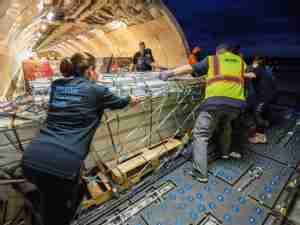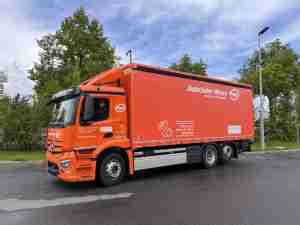2015 transportation & logistics M&A value doubles previous year
posted by AJOT | Feb 09 2016 at 04:56 PM | Logistics
It was a noteworthy year for merger and acquisition (M&A) activity in the transportation and logistics industry, as total deal value nearly doubled the level raised in 2014, according to Intersections, a quarterly analysis of global deal activity in the transportation and logistics industry by PwC US. Primarily attributed to a considerable spike in megadeals (transactions valued at $1 billion or more), 2015 as a whole closed with $172.7 billion in announced deals, a major uptick from the $87 billion recorded in all of 2014.
The year finished with a particularly strong fourth quarter which accounted for 42 percent ($73.2 billion) of the total deal value for 2015. The fourth quarter saw a 171 percent increase in value sequentially and a 206 percent increase annually, despite a nine and 25 percent decline in volume, respectively. The surge in deal value is largely the result of nine megadeals announced in the fourth quarter, totaling more than $61 billion. Megadeal activity was a major driver of deal value throughout the year with 28 transactions for a total of $124.9 billion – up from 17 transactions worth $37.2 billion in all of 2014 (236 percent increase).
“2015 was the year of headline grabbing megadeals and the transportation and logistics industry was no exception as megadeal value increased more than two-fold compared to last year, said Jonathan Kletzel, U.S. transportation and logistics leader for PwC. “The United States was an especially attractive target for large-scale M&A with eight megadeals, totaling 41 percent of the overall megadeal value. This increase within the U.S. can be attributed to domestic companies struggling to grow organically and the unprecedentedly low finance rates. As strategic investors in fragmented industries such as trucking and shipping continue to follow an inorganic path of attaining growth and scale, we expect consolidation to continue, leading to elevated deal values in the year ahead.”
Continuing the trend from 2014, shipping led overall deal value (19 percent) and volume (23 percent). Within the shipping industry, an oversupply of large shipping vessels and leveraging economies of scale drove M&A and strategic alliances as companies aimed to sustain competitiveness during the industry downturn. Other modes of transportation were also active in the 2015 deal-making landscape including, trucking, logistics and passenger ground.
Transactions involving Asia and Oceania once again dominated deal activity in 2015, accounting for more than half of the global activity with 120 deals worth $96.2 billion. A majority of the deals in this region involved China and were primarily driven by the decelerating Chinese economy as reduced growth projections caused overall softness in valuations and equity markets, leading to an increased number of attractive acquisition targets and industry exits. North America ranked second with 61 deals worth $83.5 billion, including two megadeals worth $34.7 billion.
Local deals remained the preference of transportation dealmakers in 2015, representing 59 percent of all deal activity; however, the majority of deal value (51 percent) was driven by cross-border transactions. This is a major reversal from the previous year as cross-border deal value increased by more than three times to $114.9 billion and deal volume increased by 31 percent. As large international players within the sector continue to expand their international operations and service offerings in efforts to develop global transportation networks, PwC expects continued interest in cross-border transactions.
“Looking ahead at 2016, we remain optimistic that M&A will continue as both the domestic and several foreign economies are poised for growth however; commodity pricing pressures will likely continue to have mixed effects on the various industries within the sector,” Kletzel continued. “Lower oil prices are reducing airline and trucking companies’ operating costs causing some companies to return capital to stakeholders versus funding further fleet expansion via M&A. Volatility in the commodity market continues to negatively impact the railroad industry, causing a shift in focus towards intermodal growth in efforts to offset headwinds. As more companies look to control a greater percentage of the value chain, this should lead to intermodal M&A growth across modes.”









